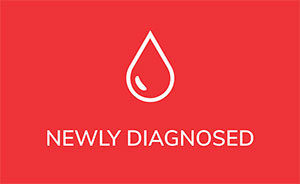
By Susan J. Leclair, PhD, CLS (NCA)
This is a general introduction to one of the ways that your immune system tries to protect you. I have combined and simplified a fair number of steps in order to give the reader a general sense of the function.
Antigens come in a huge variety of sizes (on an atomic scale, medium to large). They can be almost any chemical structure and can be an intact compound or a piece of a compound. One way to divide these up is to classify them as autoantigens (things that make an individual unique) and heteroantigens (things that are not unique to that individual). While not important to the concept of vaccines, autoantigens are the antigens that are tested for when looking for a donor for blood or bone marrow. I will be concentrating on heteroantigens.
EXPOSURE
When an antigen meets you, it needs an entry point. In the case of the virus called SARS-CoV2, it needs a warm, wet place such as the nose, eyes, throat, etc. Once in that environment, it needs an attachment point. This is the now the well-known spike protein which binds to an enzyme called ACE2, located on various cell membranes within the body. The virus then takes over the cell and causes the cell to make more copies of the virus. Those additional copies then invade other cells, and the process goes on until there are sufficient virus numbers to produce both positive testing and (when they occur) signs and symptoms. These signs (fever, shortness of breath, etc.) and symptoms (loss of smell and taste, fatigue, etc.) result from the damage that is done by the viral action in the cells. Time from exposure to symptoms can range from 1-10 days with the average around 4-5 days. When cells get damaged, they released compounds into the surrounding area that stimulate your inflammation/healing process. It is the uncontrollable inflammatory response which can cause some of the most severe situations requiring hospitalization.
NON-SPECIFIC RESPONSES
Just because the news media spends most of its time reporting on antibodies and antibody testing doesn’t mean that the non-specific response is unimportant. It is complicated and it is not easy to test, thus, it tends to get shunted to the side in communications. Non-specific responses are literally that. They are found at any time and in any location that has experienced cell damage or death. Their actions are the same if you experienced a scratch, a heart attack, or a viral infection. The major components of the non-specific response are physical barriers, chemical barriers, and cellular barriers.
Your skin is one of the best physical barriers you have. If it is unbroken, there is no way for an invading organism to enter. But with life in the real-world, there are cuts, dry skins, burns, abrasions, all manner of circumstances in which the skin integrity is broken. Poor wound healing, whether due to repeated damage, age, medications or the like, increase the opportunity for infection. You may not want or need your skin to feel as soft as a baby’s, but a cream /lotion that can prevent cracking of dry skin or restore fluids to increase burn healing is a good thing.
Chemical barriers are less obvious. The acid/base balance (pH) varies greatly throughout the body; there is not just one common pH. For example, your blood has a highly constrained pH range of 7.35 to 7.45, or slightly alkaline. In comparison, your stomach acid is highly acidic with a pH of around 1.5 to 3.5. Yet, each of the pH ranges is protective in their place. Concentrated hydrochloric acid, which you may have seen or used in high school chemistry class, can corrode iron and if put on the skin, will cause severe chemical burns in seconds. It has a pH of approximately 1, a close companion of your stomach acid with its pH of 1.5, yet your stomach does just fine.
Tears are another example. They contain an enzyme which will degrade proteins found in cell membranes. Mucus will entrap particles and keep them from penetrating deeper into tissues. Not a surprise then, that the dry air of the winter lessens mucus production in the nose and allows for a better, in effect, more hospitable environment for cold viruses.
Then, there are the cellular trash collectors. Phagocytes and monocytes travel throughout the tissue, take up, and destroy any dead or damaged or “not unique to you” material. The pus a teenager recognizes as part of the evolution of a pimple is an example of the movement of these cells to an area where they collect, eat, and die. Natural killer cells are lymphocytes, but they do not make antibodies. They can be triggered by many different foreign materials which cause them to attack and degrade without the need for specific antibody formation. When phagocytes are involved in eating foreign material, they release cytokines, chemical signals that attract the NK cells to participate in the control of viral infections by secreting such agents as interferons and tumor necrosis factors. This forms a kind of loop as the tumor necrosis factor stimulates more phagocytes to come to the area, and the phagocytes release cytokines to bring more NK cells to the area.
Finally, there is the activation of complement. This is a compound that enhances cellular action. Think of what garlic can do to a food and you get a sense of what complement does. People with chronic inflammation will sometimes have low concentrations of complement, as it is used too fast. Production works as hard as it can, but it cannot keep up. This means that there will be a lesser response for all inflammation, not just the chronic one that started the process off. This can be seen in people with chronic inflammatory conditions such as rheumatoid arthritis.
In my next article, I will discuss the Adaptive or Specific Immune Response. Meanwhile, pay attention to the daily trauma you may experience, from shaving nicks to hot water to dry skin, in order to get a sense of how often you use that non-specific defense.
Susan Leclair, PhD, CLS (NCA) is Chancellor Professor Emerita at the University of Massachusetts Dartmouth; Senior Scientist, at Forensic DNA Associates; and Moderator and Speaker, PatientPower.info – an electronic resource for patients and health care providers.



